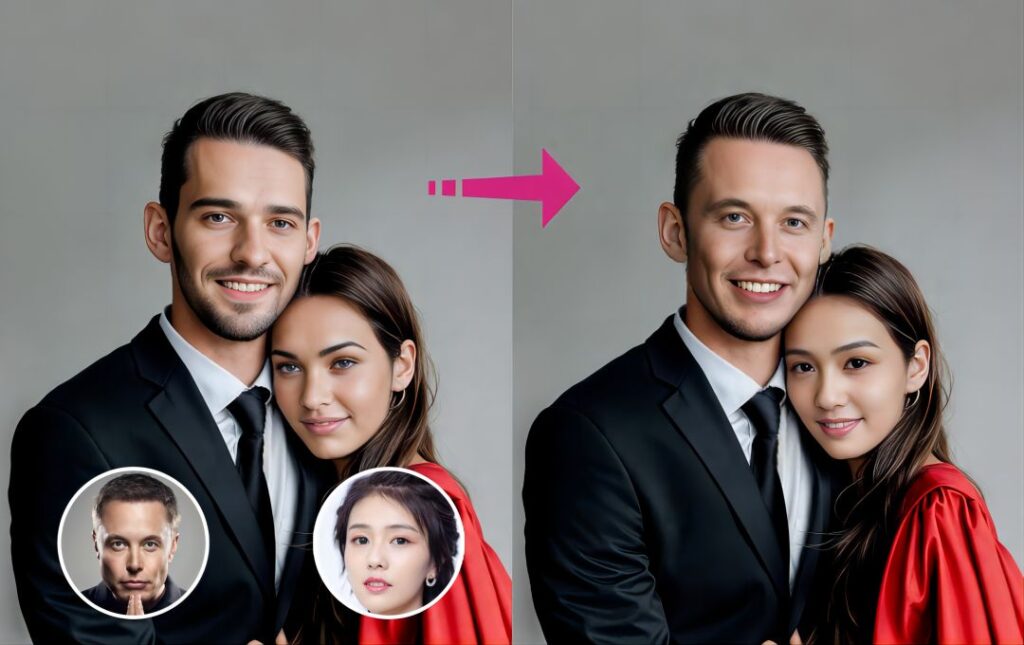In the realm of digital entertainment and social media, the phenomenon of face swap applications has captured the imagination of millions worldwide. These apps, equipped with cutting-edge artificial intelligence and image manipulation technologies, offer users the ability to seamlessly swap faces with friends, celebrities, or even historical figures, resulting in hilarious or sometimes uncanny transformations. What began as a novelty has evolved into a cultural trend, influencing not just entertainment but also raising intriguing questions about identity, privacy, and the ethics of digital manipulation.
The Evolution of Face Swap Technology
Face swap technology has come a long way since its inception. Initially, it relied on basic algorithms to overlay one face onto another, often producing crude and unrealistic results. However, advancements in machine learning and computer vision have revolutionized the capabilities of face swap app. Modern applications leverage deep learning algorithms, neural networks, and facial landmark detection to accurately map and manipulate facial features in real-time. This enables users to achieve remarkably realistic and convincing face swaps with minimal effort.
Entertainment and Social Media: Driving the Face Swap Craze
The widespread adoption of face swap apps can be largely attributed to their integration into popular social media platforms and the entertainment industry. Platforms like Snapchat and TikTok have integrated face swap features into their camera interfaces, allowing users to create and share personalized content effortlessly. Celebrities and influencers have also embraced face swap technology, using it to engage with their fans and create viral content.
The entertainment value of face swap apps extends beyond mere amusement. They have become powerful tools for storytelling, enabling creators to explore alternate realities, parody famous scenes, or generate comedic content. Moreover, face swap technology has breathed new life into the art of impersonation, allowing users to convincingly mimic the appearance of iconic figures or characters with astonishing accuracy.
The Impact on Digital Identity and Privacy
While face swap apps offer entertainment and creative opportunities, they also raise significant concerns regarding digital identity and privacy. With the ability to superimpose faces onto different bodies or contexts, these apps blur the lines between reality and fiction, challenging traditional notions of identity and authenticity. In an era where manipulated images can spread rapidly across the internet, the integrity of digital identities becomes increasingly vulnerable.
Moreover, the widespread availability of face swap technology raises ethical questions about consent and deception. The ease with which faces can be swapped without explicit permission poses risks of misuse, including identity theft, impersonation, and the spread of false information. As such, the responsible use of face swap apps requires a nuanced understanding of the ethical implications and a commitment to respecting individual privacy and consent.
Beyond Entertainment: Practical Applications and Challenges
While face swap apps are primarily associated with entertainment, they also have practical applications in various fields. In the realm of filmmaking and visual effects, face swap technology enables seamless integration of actors into scenes or facilitates the creation of convincing digital doubles for stunts and action sequences. In the medical domain, it can aid in facial reconstruction or assist individuals with facial disfigurements to envision potential cosmetic procedures.
However, the proliferation of face swap technology also presents challenges, particularly in the realm of cybersecurity and misinformation. Deepfake videos, which use advanced face swap techniques to superimpose one person’s face onto another’s body, have raised concerns about their potential to deceive and manipulate audiences. Addressing these challenges requires a multifaceted approach involving technological innovations, regulatory measures, and media literacy initiatives.
The Future of Face Swap Technology
As technology continues to evolve, the future of face swap apps holds both promise and peril. Advancements in artificial intelligence and augmented reality are likely to further enhance the realism and versatility of face swap applications, blurring the boundaries between the virtual and physical worlds. However, with great power comes great responsibility, and ensuring the ethical and responsible use of this technology will be paramount in shaping its impact on society.
Moreover, the ongoing debate surrounding the regulation of face swap technology underscores the need for collaboration between policymakers, technologists, and ethicists. By establishing clear guidelines and safeguards, we can harness the potential of face swap technology while mitigating its risks.
face swap apps represent a fascinating intersection of technology, entertainment, and ethics. While they offer endless possibilities for creativity and expression, they also raise important questions about identity, privacy, and digital manipulation. As we navigate the evolving landscape of digital media, it is imperative to approach face swap technology with caution, critical thinking, and a commitment to upholding ethical standards in the digital age.
Absolutely! Face swap apps represent a fascinating blend of technology, entertainment, and ethical considerations. They empower users to unleash their creativity and imagination, enabling them to transform their appearance in playful and amusing ways. However, beneath the surface, these apps also raise important questions about identity, privacy, and the ethical use of digital manipulation.
In today’s rapidly evolving digital landscape, it’s essential that we approach face swap technology with a critical eye and a strong sense of responsibility. While they offer a plethora of opportunities for self-expression and entertainment, they also present potential risks and ethical dilemmas. As users, it’s crucial to be mindful of the implications of our actions and to consider the ethical ramifications of using these apps.
Moreover, developers and policymakers alike must prioritize the implementation of robust safeguards and regulations to protect user privacy and prevent misuse. By promoting transparency, informed consent, and ethical guidelines, we can ensure that face swap technology continues to serve as a source of joy and creativity while upholding the integrity of our digital identities.
In essence, embracing face swap technology requires us to navigate a complex landscape where innovation intersects with ethics. By fostering a culture of responsible usage and ethical awareness, we can harness the full potential of these apps while mitigating their potential risks. Ultimately, it’s up to us to wield these powerful tools responsibly and ensure that they contribute positively to our digital lives.






